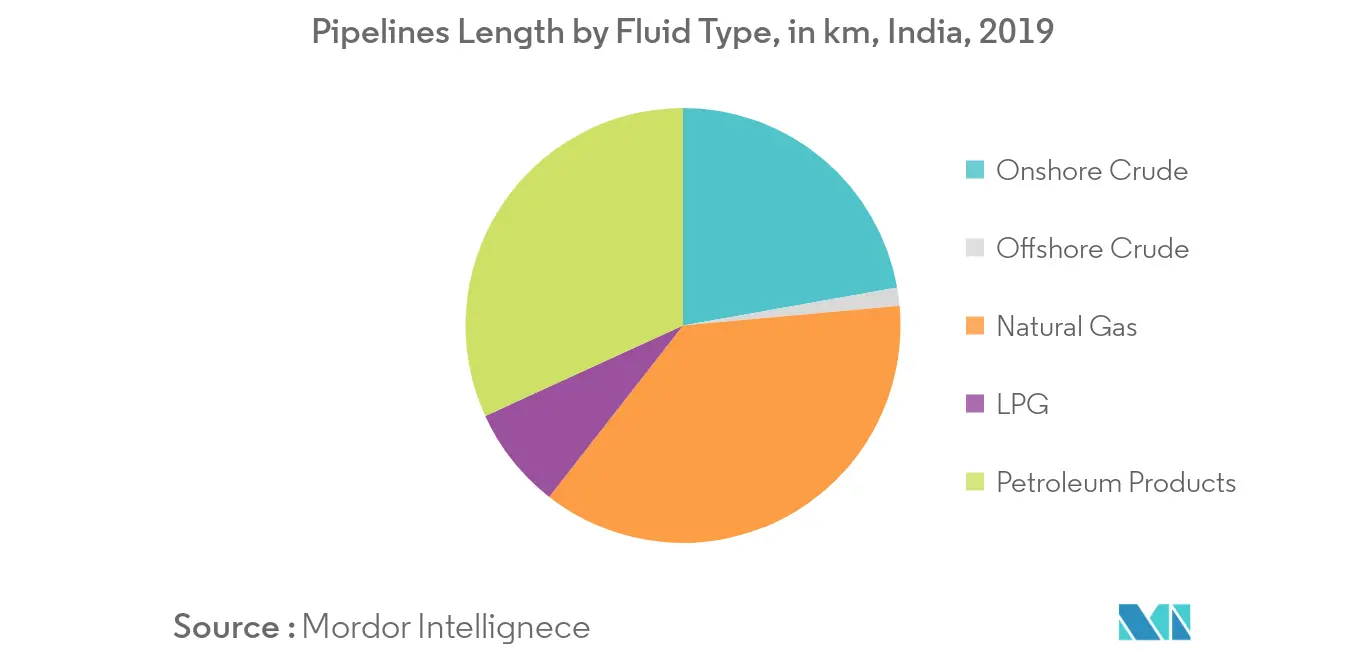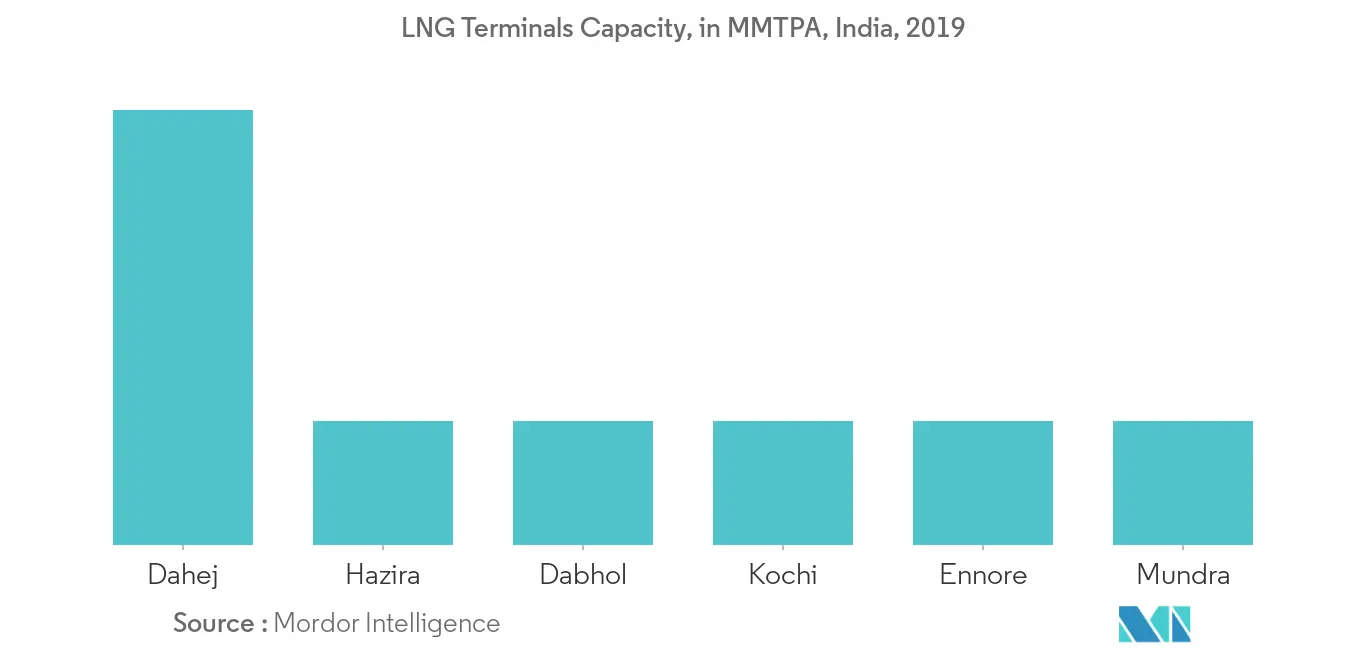Market Trends of India Oil and Gas Midstream Industry
This section covers the major market trends shaping the India Oil & Gas Midstream Market according to our research experts:
Transportation by Pipeline to Drive the Market
- The pipeline is the most economical way of transportation of natural gas, crude oil, and petroleum product over a long distance. Crude Pipeline length has increased to 10,419 km in 2019, whereas gas pipeline length increased to 16,368 km.
- The capacity of crude oil pipeline reported 157.7 million metric tons (MMT), in 2019. One of the largest capacity crude oil pipelines in the country is the Salaya - Mathura pipeline, which has an existing capacity of 25000 TMT in 2019.
- In 2019, the world's longest liquified petroleum gas (LPG) pipeline was expected to be laid, in the forecast period, for approximately 9,000 crore INR. It is expected to take the LPG from three LPG import terminals (at Kandla, Pipavav, and Dahej) and two oil refineries along the route. The LPG will be transported to the LPG bottling plants in the States of Gujarat, Madhya Pradesh, and Uttar Pradesh.
- Jagdishpur-Haldia and Bokaro-Dhamra Pipeline (JHBDPL) phase two is a 1,836km-long gas pipeline system being developed in the states of Odisha, Jharkhand, and West Bengal in India. The project is expected to complete by the end of 2020 at the cost of INR 93.8 billion.
- Northwestern India has a highly developed natural gas infrastructure, with highly utilized terminals of Hazira and Dahej. However, the southern and eastern regions of the country lack pipelines to move natural gas from coastal LNG import terminals to significant demand centers further inland.

LNG Terminals to Witness Significant Growth
- In February 2019, Atlantic Gulf and Pacific started construction of its first LNG terminal in India, which is being built on a 12-hectare site, with an initial capacity of one million tons per annum. The terminal is expected to be operational by the fourth quarter of 2021.
- Atlantic Gulf and Pacific is also aiming to add two more LNG terminals in India during the forecast period. With this, significant growth in the midstream sector is anticipated during the forecast period.
- According to Petronet, by the end of 2019, India has five existing LNG terminals, another five are under construction phase, and three are under the proposal phase. With the upcoming terminals, the market is likely to grow significantly.
- In 2019, the Indian government set a goal to increase the share of natural gas from 6.2% in 2018 to 15% by 2030. Future growth in India's LNG imports is contingent on connecting LNG regasification terminals on coasts to demand centers further inland via pipeline.
- India's LNG imports had grown from 31% of the country's natural gas supply in 2012 to more than 50% in 2019. With this, the demand for LNG storage and terminals facilities has increased significantly. With further anticipated growth in the market, demand for storage facilities is expected to grow.


